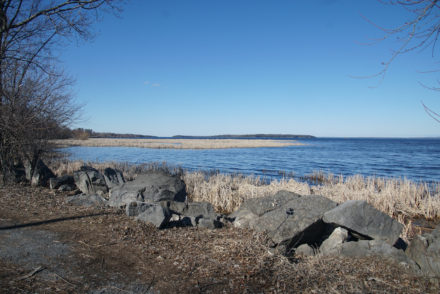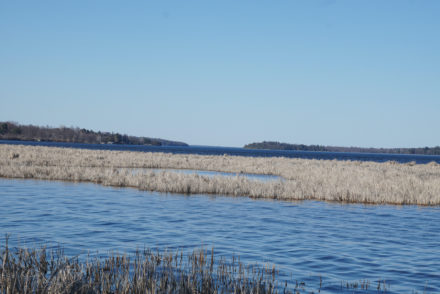Non-Invasive Cattails At Ausable Point


Have you ever wondered if the vegetation at the mouth of the Little Ausable River at Ausable Point State Campground is harmful to the environment? The Peru Gazette contacted the New York State Department of Environmental Conservation at Ray Brook and the Ausable River Assocation. Both organizations were very helpful. They both said not to worry.
Here is DEC’s response:
This area is part of DEC’s Ausable Marsh Wildlife Management Area. There is a large cattail marsh at the mouth of the Little Ausable, north along Route 9, and along both sides of the Ausable Point Campground Road. It’s a wetland community of native plant species that provides habitat for a variety of wildlife as well as erosion control. DEC does not manage cattails; muskrats often do a good job of managing it for us.
Carie Pershyn of the Ausable River Association responded, “Cattails are native and grow in dense thickets in the shallow water of bays and wetlands. If the cattail beds are increasing in size at this site, it may be due to lower lake levels over the past few years, or perhaps a buildup of sediment and sand coming downstream from the marsh and the river (i.e., sediment deposition means the bay might be getting shallower, creating habitat for cattails). The cattails provide multiple benefits for wildlife, including nesting habitat for red-winged blackbirds, and providing cover and food for various fish, duck, and muskrat. These cattail beds are good for migratory and non-migratory wildlife species.”
The last intensive invasive species survey in this area was conducted by DEC in 2008. For more information about invasive species, the Adirondack Park Invasive Plant Program’s website and interactive map may provide further information. For more information on the Ausable Marsh Wildlife Management Area, visit https://www.dec.ny.gov/outdoor/24400.
Correction dated 2/3/21. The original story stated Lake Champlain Basin Program. Ausable River Association is correct.
Posted: February 2nd, 2021 under Adirondack Region News, Environmental News, General News, Northern NY News, Peru News, State Government News, Things to do in & near Peru.
